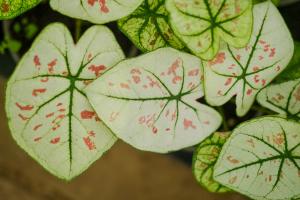Introduction
Planting elephant ear bulbs is a great way to add tropical flair to your garden. These bulbs are easy to cultivate and thrive in warm, humid climates. However, it's important to know how often to water them to ensure their healthy growth. In this article, we'll provide you with the necessary information to care for your newly planted elephant ear bulbs.
Understanding Elephant Ear Bulbs
Before we dive into watering schedules, it's helpful to understand the anatomy of elephant ear bulbs. These bulbs store water and nutrients, allowing the plants to survive periods of drought. They also contain a growing point or “eye” from which new shoots emerge.
When to Water Elephant Ear Bulbs
After planting elephant ear bulbs, it's essential to keep the soil consistently moist, but not wet. Water the bulbs deeply after planting to help settle the soil around the bulbs. Then, water them regularly to maintain the moisture level.
How Often to Water Elephant Ear Bulbs
The frequency of watering depends on a few factors, including your climate, soil type, and the size of the bulbs. In general, you should water elephant ear bulbs every three to four days. However, if you live in a particularly dry or hot area, you might need to water them more often.
Signs of Overwatering and Underwatering
It's easy to overwater elephant ear bulbs, which can lead to root rot and other issues. Signs of overwatering include yellowing leaves, wilting, and a foul odor. Underwatering can cause the leaves to wilt and turn brown. Be sure to monitor your plants and adjust your watering schedule as needed.
Additional Tips for Watering Elephant Ear Bulbs
To ensure your elephant ear bulbs thrive, here are some additional tips to keep in mind:
Water deeply, but don't let the bulbs sit in standing water.
Avoid overhead watering, as this can lead to fungal infections.
Use mulch to help retain soil moisture.
During the hot summer months, consider providing some shade for your plants.
Conclusion
Watering elephant ear bulbs doesn't have to be complicated. By understanding the plant's needs and monitoring the soil's moisture level, you can help your bulbs grow healthy and strong. Don't be afraid to adjust your watering schedule as necessary, and be sure to follow the additional tips we've provided. With a little care and attention, your elephant ear bulbs will thrive in your garden for years to come.

 how many times do yo...
how many times do yo... how many planted tre...
how many planted tre... how many pine trees ...
how many pine trees ... how many pecan trees...
how many pecan trees... how many plants comp...
how many plants comp... how many plants can ...
how many plants can ... how many plants and ...
how many plants and ... how many pepper plan...
how many pepper plan...































